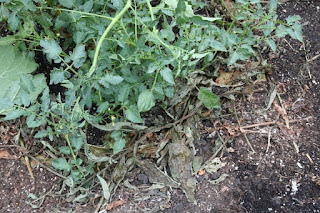There are a number of reasons you should be growing comfrey. Comfrey is hardy to Zone 4, does well in full sun or partial shade and once established, can easily grow to four feet or more, with large grey-green leaves and delicate purple flowers.
As a plant, comfrey will add interest and beauty to your garden, but its usefulness extends beyond its aesthetic appeal. Both the flowers and the leaves can play an important role in improving the yield and quality of your vegetable garden.
Comfrey will generally bloom in late April or early May, offering important forage for bumblebees and other pollinators.
Flowering will continue through the greater part of the summer, encouraging pollinators to stop by your tomatoes, peppers, squash and other vegetables, improving blossom set and increasing yields.
The leaves of the comfrey plant can also be utilized to improve your vegetable garden. Comfrey leaves hold rich deposits of nitrogen and potassium and can be used in a number of ways to feed your plants as well as improve your garden soil. You can begin harvesting comfrey leaves when the plant is about two feet tall. Cut the leaves down to within a few inches of the crown.
The plant will rebound quickly, sending out another set of leaves in a matter of days. In fact, you should be able to harvest comfrey leaves three or more times during the course of the season. Once harvested, comfrey leaves can be utilized as a mulch, a green manure or you can make a tea or fermented plant juice out of them.
Mulching your tomatoes and vegetables with comfrey leaves is easy. Simply place several inches of leaves around the base of your plants. This will act as a mulch to hold moisture in and prevent weed from germinating.
As the leaves break down, they will slowly release nitrogen and potassium to your plant’s roots. Another way to harvest comfrey's nutrients is to brew some tea.
Simply cut up the leaves, place them in a clear jar, add water and a cap and set in the sun. They’ll brew just like sun tea.
In a few hours, you’ll see the liquid start to turn brown, indicating the brewing process is working.
After 32 to 48 hours, your brew should be ready to use. There are three advantages to doing your tea this way. It’s quick. You normally don’t have to dilute the solution to use it and it doesn’t smell. You can ferment comfrey leaves and achieve a stronger solution, but the process takes weeks and the end result has a strong, disgusting smell. Comfrey can also be used to energize your compost pile. Layering comfrey cuttings in with your compost is an effective way to jumpstart decomposition.
At the end of the season, lay your final comfrey leaf harvest on top of the garden and cover it with compost or earth worm castings. It’s a great way to improve the soil through the winter.












No comments:
Post a Comment